Current Opening
One PhD or Postdoc position available. Due to the restrictions imposed by funding agencies, the position is only open to US citizen or nonsensitive country national only. Application accepts until the position is filled. Please contact the PI for details.
Associate Research Scientist
This is no opening of the associate research scientist position currently.
Postdoctoral Research Scientist
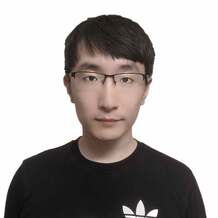
Yingxiao Liu
ORCID: 0000-0001-9304-7964
I will join Prof. Sun’s group as a postdoctoral research scientist in 2023. I obtained my M.S. (2019) and Ph.D. (2023) degrees in civil and environmental engineering from Stanford University, and my B.Eng. degree (2017) in civil engineering (minor in computer science) from the University of Hong Kong. I worked on the time-dependent deformation of geological materials across multiple spatiotemporal scales, and combined analytical solutions, experimental studies, and numerical simulations in my research. My current research interests include computational mechanics and machine learning approaches.
ORCID: 0000-0001-9304-7964
I will join Prof. Sun’s group as a postdoctoral research scientist in 2023. I obtained my M.S. (2019) and Ph.D. (2023) degrees in civil and environmental engineering from Stanford University, and my B.Eng. degree (2017) in civil engineering (minor in computer science) from the University of Hong Kong. I worked on the time-dependent deformation of geological materials across multiple spatiotemporal scales, and combined analytical solutions, experimental studies, and numerical simulations in my research. My current research interests include computational mechanics and machine learning approaches.
PhD Students

Mian Xiao
I am admitted to the CEEM program at Columbia University, and I will join Prof. Sun’s group in fall 2020 as a PhD student. I obtained my M.S. degree at Stanford University (Jun 2020 expected), and my B.Eng. degree at Tsinghua University (Jul 2018). At Stanford University, I worked with Prof. R.I. Borja, and my major interests were material plasticity and time-dependent behavior of shales. I was also dedicated to studying computational mathematics and computer science in my master’s career. Currently I am interested in computational mechanics as well as machine learning topics.
Published work:
I am admitted to the CEEM program at Columbia University, and I will join Prof. Sun’s group in fall 2020 as a PhD student. I obtained my M.S. degree at Stanford University (Jun 2020 expected), and my B.Eng. degree at Tsinghua University (Jul 2018). At Stanford University, I worked with Prof. R.I. Borja, and my major interests were material plasticity and time-dependent behavior of shales. I was also dedicated to studying computational mathematics and computer science in my master’s career. Currently I am interested in computational mechanics as well as machine learning topics.
Published work:
- M. Xiao, W.C. Sun, C. Liu, DP-MPM: Domain partitioning material point method for evolving multi-body thermal-mechanical contacts and fragmentation, Computer Methods in Applied Mechanics and Engineering, accepted, 2021. [Video]
- M. Xiao, W.C. Sun, Geometric prior of multi-resolution yielding manifold and the local closest projection for nearly non-smooth plasticity, Computer Methods in Applied Mechanics and Engineering, doi:10.1016/j.cma.2022.115469, 2022. [URL]
- Z. Xiong, M. Xiao, N.N. Vlassis, W.C. Sun, A neural kernel method for capturing multiscale high-dimensional micromorphic plasticity of materials with internal structures, Computer Methods in Applied Mechanics and Engineering, doi:10.1016/j.cma.2023.116317, 2023.
- M. Xiao, W.C. Sun, Geometric learning for computational mechanics Part III. Physics-locally-constrained response surface of geometric nonlinear shells, Computer Methods in Applied Mechanics and Engineering, doi:10.1016/j.cma.2023.116219, 2023. [URL]
- M. Xiao, W.C. Sun, A MPM Lagrangian-Eulerian hydrocode for simulating buried explosions in transversely isotropic geomaterials, submitted.

Jarett Stephen Lo Poliner
I have a B.S. degree in Engineering Mechanics and a M.S. degree in Civil Engineering from Columbia University (2020). As an undergraduate, I minored in Civil Engineering and Applied Mathematics. I’ve done research in 3D concrete printing and Finite Element assembly of heart valve leaflet geometry. My current research interests include Computational Mechanics and geomaterial analysis. I am currently enrolled as a PhD student in Columbia University’s Civil Engineering and Engineering Mechanics Department.
Published work:
TBD
I have a B.S. degree in Engineering Mechanics and a M.S. degree in Civil Engineering from Columbia University (2020). As an undergraduate, I minored in Civil Engineering and Applied Mathematics. I’ve done research in 3D concrete printing and Finite Element assembly of heart valve leaflet geometry. My current research interests include Computational Mechanics and geomaterial analysis. I am currently enrolled as a PhD student in Columbia University’s Civil Engineering and Engineering Mechanics Department.
Published work:
TBD
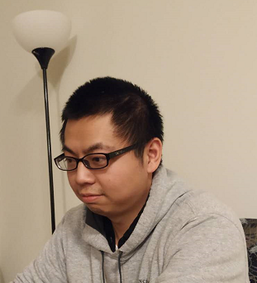
Zeyu Xiong
I am enrolled in Columbia University CEEM program and will join Prof. Sun’s group in Sep 2020 to start my PhD study. Prior to Columbia, I obtained my M.S. degree in Civil Engineering (Princeton University, 2020) and dual B.S. degree in Electrical and Computer Engineering (Shanghai Jiaotong University, 2018) and Mechanical Engineering (University of Michigan, 2018). At Princeton University, my research focused on sensor measurements for crack identification, including crack modelling with FENICS FEM, model-based indirect sensing algorithm, inverse elastostatic problem for crack localization and quantification, and optimization of the sensing devices.
Published work:
I am enrolled in Columbia University CEEM program and will join Prof. Sun’s group in Sep 2020 to start my PhD study. Prior to Columbia, I obtained my M.S. degree in Civil Engineering (Princeton University, 2020) and dual B.S. degree in Electrical and Computer Engineering (Shanghai Jiaotong University, 2018) and Mechanical Engineering (University of Michigan, 2018). At Princeton University, my research focused on sensor measurements for crack identification, including crack modelling with FENICS FEM, model-based indirect sensing algorithm, inverse elastostatic problem for crack localization and quantification, and optimization of the sensing devices.
Published work:
- C. Cai, N. Vlassis, L. Magee, R. Ma, Z. Xiong, B. Bahmani, T-F Wong, Y. Wang, W.C. Sun, Equivariant geometric learning for digital rock physics. Part I: Estimating formation factor and effective permeability tensors, International Journal for Multiscale Computation and Engineering, accepted, 2021.
- Z. Xiong, M. Xiao, N.N. Vlassis, W.C. Sun, A neural kernel method for capturing multiscale high-dimensional micromorphic plasticity of materials with internal structures, Computer Methods in Applied Mechanics and Engineering, doi:10.1016/j.cma.2023.116317, 2023.

Nhon Ngoc Phan
ORCID: 0000-0002-8275-3537
I received my B.A. degree in physics from College of the Holy Cross (2021) and my B.S. degree in civil engineering from Columbia University (2021). As an undergraduate student at Holy Cross, I studied systems of spin-1/2 fermions bound by gravity to determine their stability and likeliness to form a black hole. At Columbia, I first joined Professor Steve Waiching Sun’s research group in the summer of 2020 through the Army’s funding. With Professor Sun’s guidance, I implemented convolutional neural network model for physics problems such as heat transfer and fracture propagation. This introduction to machine learning led me to apply for graduate school and for the SMART Scholarship. Through the support of the SMART Scholarship and the Army Research Laboratory, I am currently pursuing my M.S. and Ph.D. degrees in engineering mechanics at Columbia. My interest lies in using machine learning to study continuum mechanics.
Published work:
ORCID: 0000-0002-8275-3537
I received my B.A. degree in physics from College of the Holy Cross (2021) and my B.S. degree in civil engineering from Columbia University (2021). As an undergraduate student at Holy Cross, I studied systems of spin-1/2 fermions bound by gravity to determine their stability and likeliness to form a black hole. At Columbia, I first joined Professor Steve Waiching Sun’s research group in the summer of 2020 through the Army’s funding. With Professor Sun’s guidance, I implemented convolutional neural network model for physics problems such as heat transfer and fracture propagation. This introduction to machine learning led me to apply for graduate school and for the SMART Scholarship. Through the support of the SMART Scholarship and the Army Research Laboratory, I am currently pursuing my M.S. and Ph.D. degrees in engineering mechanics at Columbia. My interest lies in using machine learning to study continuum mechanics.
Published work:
- E. Daka, N.N. Phan, B. Kain, Perturbing the ground state of Dirac stars, Physical Review D, doi:10.1103/PhysRevD.100.084042, 2019, (unaffiliated research).
- R. Villarreal, N.N. Vlassis, N.N. Phan, T.A. Catanach, R.E. Jones, N.A. Trask, S.L. Karmer, W.C. Sun, Design of experiments for the calibration of history-dependent models via deep reinforcement learning and an enhanced Kalman filter, Computational Mechanics, doi:10.1007/s00466-023-02335-6, 2023.
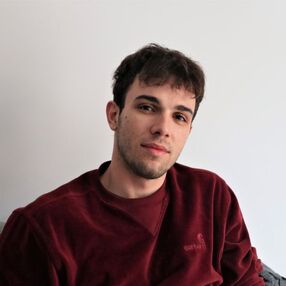
Georgios Barkoulis Gavris
Ι am currently a final year student at the 5-year Civil Engineering MEng course at the National Technical
University of Athens, expected to graduate July 2022. During my studies I focused on structural engineering and in my final thesis I concentrated on finite element methods and phase field modeling to examine brittle and ductile fracture. In fall 2022 I will enroll in a PhD program in the Columbia University (Civil Engineering and Engineering Mechanics department) under the supervision of Prof. Sun.
Published work:
TBA
Ι am currently a final year student at the 5-year Civil Engineering MEng course at the National Technical
University of Athens, expected to graduate July 2022. During my studies I focused on structural engineering and in my final thesis I concentrated on finite element methods and phase field modeling to examine brittle and ductile fracture. In fall 2022 I will enroll in a PhD program in the Columbia University (Civil Engineering and Engineering Mechanics department) under the supervision of Prof. Sun.
Published work:
TBA
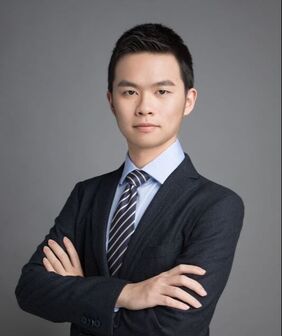
Huijian Cai
I am an incoming Ph.D student in Professor Sun’s group for Fall 2023. I received by B.Eng. degree in Civil Engineering at Huazhong University of Science and Technology in 2021, and M.S. degree in Structural Engineering at Stanford University in 2023. During my study at Stanford University, I worked with Professor Christian Linder in Physic-informed Neural Networks (PINN) and with Professor Sun in
Hamiltonian Neural Networks and neural subgraph mining applications in granular materials. These
multidisciplinary studies have sparked my interest in exploring the applications of deep learning to
computational mechanics, and are the reasons for my pursuit of a Ph.D degree. My current research
interests lie in deep-reinforcement-learning- and graph-neural-network-based methods for mechanical
modeling.
I am an incoming Ph.D student in Professor Sun’s group for Fall 2023. I received by B.Eng. degree in Civil Engineering at Huazhong University of Science and Technology in 2021, and M.S. degree in Structural Engineering at Stanford University in 2023. During my study at Stanford University, I worked with Professor Christian Linder in Physic-informed Neural Networks (PINN) and with Professor Sun in
Hamiltonian Neural Networks and neural subgraph mining applications in granular materials. These
multidisciplinary studies have sparked my interest in exploring the applications of deep learning to
computational mechanics, and are the reasons for my pursuit of a Ph.D degree. My current research
interests lie in deep-reinforcement-learning- and graph-neural-network-based methods for mechanical
modeling.
Master Students
Master students interested to work with me are strongly advised to take the computational poromechanics and finite element in geotechnical engineering courses in the fall semester. See Recruitment Section.
Master students interested to work with me are strongly advised to take the computational poromechanics and finite element in geotechnical engineering courses in the fall semester. See Recruitment Section.
Undergraduate Research Student
Typically we have one to two funded position for summer research each summer. Basic calculus, linear algebra and mechanics are helpful but not required. See Recruitment Section.
Typically we have one to two funded position for summer research each summer. Basic calculus, linear algebra and mechanics are helpful but not required. See Recruitment Section.
High School Summer Interns
Summer internship position may open next summer.
PhD Alumni

Bahador Bahmani (now postdoctoral research fellow, at Johns Hopkins University)
ORCID: 0000-0002-2115-7109
Bahador joined the group in Sep. 2019 as a Ph.D. student. His research lies at the intersection of computational mechanics and machine learning, focusing on developing scalable and robust algorithms for forward and inverse problems in data-driven solid mechanics. He also has industrial research experience in computational geometry, machine learning, and software development.
Published work:
ORCID: 0000-0002-2115-7109
Bahador joined the group in Sep. 2019 as a Ph.D. student. His research lies at the intersection of computational mechanics and machine learning, focusing on developing scalable and robust algorithms for forward and inverse problems in data-driven solid mechanics. He also has industrial research experience in computational geometry, machine learning, and software development.
Published work:
- B. Bahmani, W.C. Sun, A kd-tree accelerated hybrid data-driven/model-based approach for poroelasticity problems with multi-fidelity multi-physics data, Computer Methods in Applied Mechanics and Engineering, 2021. [Video] [PDF]
- X. Sun, B. Bahmani, N. Vlassis, W.C. Sun, Y. Xu, Data-driven discovery of interpretable causal relations for deep learning material laws with uncertainty quantification, Granular Matter, accepted, 2021
- C. Cai, N. Vlassis, L. Magee, R. Ma", Z. Xiong, B. Bahmani, T-F Wong, Y. Wang, W.C. Sun, Equivariant geometric learning for digital rock physics. Part I: Estimating formation factor and effective permeability tensors, International Journal for Multiscale Computation and Engineering, accepted, 2021.
- B. Bahmani, W.C. Sun, Manifold embedding data-driven mechanics, Journal of the Mechanics and Physics of Solids, accepted, 2022.
- P.C.H.Nguyen, B. Bahmani, N.N. Vlassis, W.C. Sun, H.S. Udaykumar, S.S. Baek, Synthesizing Controlled Microstructures of Porous Media using Generative Adversarial Networks and Reinforcement Learning, Scientific Reports, 12:9034, 2022. [URL]
- B. Bahmani, W.C. Sun, Distance-preserving manifold de-noising for data-driven mechanics, doi:10.1016/j.cma.2022.115857, 2022. [URL]
- B. Bahmani, W.C. Sun, Training multi-objective/multi-task collocation physics-informed neural network with student/teachers transfer learning, submitted.
- B. Bahmani, W.C. Sun, Discovering interpretable elastoplasticity models via the neural polynomial method enabled symbolic regressions, Computer Methods in Applied Mechanics and Engineering, doi:10.1016/j.cma.2024.116827, 2024. [Code]
- B. Bahmani, W.C. Sun, Physics-constrained symbolic model discovery for polyconvex incompressible hyperelastic materials, International Journal for Numerical Method in Engineering, accepted, 2024.

Nikolaos Napoleon Vlassis, PhD (now assistant professor at Rutgers University)
ORCID: 0000-0002-0644-234X
I have obtained a B.S. and M.S. degree in Civil Engineering from the National Technical University of Athens (2017). At NTUA, I opted for a concentration in Structural Engineering where I focused on the modeling of structures and the seismic evaluation, retrofit and loss assessment of pre-existing buildings. I am currently enrolled in the PhD program in the Columbia University Civil Engineering and Engineering Mechanics department.
Published work:
ORCID: 0000-0002-0644-234X
I have obtained a B.S. and M.S. degree in Civil Engineering from the National Technical University of Athens (2017). At NTUA, I opted for a concentration in Structural Engineering where I focused on the modeling of structures and the seismic evaluation, retrofit and loss assessment of pre-existing buildings. I am currently enrolled in the PhD program in the Columbia University Civil Engineering and Engineering Mechanics department.
Published work:
- N. Vlassis, R. Ma, W.C. Sun, Geometric deep learning for computational mechanics Part I: Anisotropic Hyperelasticity, Computer Methods in Applied Mechanics and Engineering, 2020.
- N. Vlassis, W.C. Sun, Sobolev training of thermodynamic-informed neural networks for interpretable elasto-plasticity models with level set hardening, Computer Methods in Applied Mechanics and Engineering, 2021.
- X. Sun, B. Bahmani, N. Vlassis, W.C. Sun, Y. Xu, Data-driven discovery of interpretable causal relations for deep learning material laws with uncertainty quantification, Granular Matter, 2021.
- N. Vlassis, W.C. Sun, Component-based machine learning paradigm for discovering rate-dependent and pressure-sensitive level-set plasticity models, Journal of Applied Mechanics, doi:10.1115/1.4052684, 2021.
- C. Cai, N. Vlassis, L. Magee, R. Ma", Z. Xiong, B. Bahmani, T-F Wong, Y. Wang, W.C. Sun, Equivariant geometric learning for digital rock physics. Part I: Estimating formation factor and effective permeability tensors, International Journal for Multiscale Computation and Engineering, accepted, 2021.
- N. Vlassis, P. Zhao, R. Ma, T. Sewell, W.C. Sun, MD-inferred neural network monoclinic finite-strain hyperelasticity models for β-HMX: Sobolev training and validation against physics constraints, under review.
- P.C.H.Nguyen, B. Bahmani, N.N. Vlassis, W.C. Sun, H.S. Udaykumar, S.S. Baek, Synthesizing Controlled Microstructures of Porous Media using Generative Adversarial Networks and Reinforcement Learning, Scientific Reports, 12:9034, 2022. [URL]
- N.N. Vlassis, W.C. Sun, Geometric deep learning for computational mechanics Part II: Graph embedding for interpretable multi-scale plasticity, Computer Methods in Applied Mechanics and Engineering, accepted, 2022. [Preprint]
- N.N. Vlassis, W.C. Sun, Denoising diffusion algorithm for inverse design of microstructures with fine-tuned nonlinear material properties, Computer Methods in Applied Mechanics and Engineering, in press, 2023.
- N.N. Vlassis, W.C. Sun, K. Alshibli, R.A. Regueiro, Synthesizing realistic sand assemblies with de-noising diffusion in latent space, submitted.

Hyoung Suk Suh (now assistant professor at Case Western Reserve University)
ORCID: 0000-0002-5032-5255
I’m currently a Ph.D. student and selected as a recipient of the Presidential Fellowship here in Columbia University. Prior to Columbia, I obtained my B.S. (2015) and M.S. (2017) degrees in Civil and Environmental Engineering from Yonsei University, where I also worked as a Post-Master’s Researcher for an year. At Yonsei University, my research focused on micro-scale modeling and characterization of geomaterials with the aid of 3D X-ray computed tomography and image-processing techniques such as: particle shape analysis with correlation of soil properties; morphological quantification of pore space; and two-phase flow simulation in porous media to capture the water retention characteristics.
Published work:
ORCID: 0000-0002-5032-5255
I’m currently a Ph.D. student and selected as a recipient of the Presidential Fellowship here in Columbia University. Prior to Columbia, I obtained my B.S. (2015) and M.S. (2017) degrees in Civil and Environmental Engineering from Yonsei University, where I also worked as a Post-Master’s Researcher for an year. At Yonsei University, my research focused on micro-scale modeling and characterization of geomaterials with the aid of 3D X-ray computed tomography and image-processing techniques such as: particle shape analysis with correlation of soil properties; morphological quantification of pore space; and two-phase flow simulation in porous media to capture the water retention characteristics.
Published work:
- H.S. Suh, W.C. Sun, An open source FEniCS implementation of a phase field fracture model for micropolar continua, International Journal of Multiscale Computational Engineering, doi:10.1615/IntJMultCompEng.2020033422, 2019. [open source code]
- H.S. Suh, D. O'Conner, W.C. Sun, A phase field model for cohesive fracture in micropolar continua, Computer Methods in Applied Mechanics and Engineering, accepted, 2020.
- H.S. Suh, W.C. Sun, An immersed phase field model for microporomechanics of fracture-induced leakage, Physics of Fluids (Editor's pick), doi:10/1063/5.0035602, 2021. [PDF]
- Y. Heider", H.S. Suh, W.C. Sun, An offline multi-scale unsaturated poromechanics model enabled by self-designed/self-improved neural network, International Journal for Numerical and Analytical Methods in Geomechanics, doi:10.1002/nag.3196, 2021.
- H. Suh, W.C. Sun, Asynchronous phase field fracture model for porous media with thermally non-equilibrated constituents, Computer Methods in Applied Mechanics and Engineering, doi:10.1016/j.cma.2021.114182, 2021.
- H. Suh, W.C. Sun, Multi-phase-field microporomechanics model for simulating ice lens growth and thaw in frozen soil, International Journal for Numerical and Analytical Methods in Geomechanics, doi:10.1002/nag.3408, 2022. [PDF][Featured Cover]
- H.S. Suh, C. Kweon, B. Lester, S. Karmer, W.C. Sun, A publicly available e PyTorch-ABAQUS UMAT deep-learning framework for level-set plasticity, Mechanics of Materials, doi:10.1016/j.mechmat.2023.104682, 2023. [URL]

Eric Cushman Bryant, PhD (now Harold Agnew National Security Fellow at Theoretical Division of Los Alamos National Laboratory)
OCIRD: 0000-0002-9945-8921
Dissertation: Capturing evolving size-dependent anisotropy from brittle fracture to plasticity for geological materials [PDF]
I have a BS degree in civil engineering (UMass, 2013), and a MS degree in petroleum engineering (UT, 2016). At UT my work focused on Finite Volume-discretized poromechanics, and Finite Area-discretized Reynolds flow of pumped fluids, via development of a C++ codebase. Energy sector-related applications of that work include the modeling of near-wellbore complexity (competitive longitudinal versus transverse) fracture growth in the vicinity of cased, cemented wells during hydraulic fracturing treatments. At Columbia I expect to combine locally accurate but computationally costly coupled nonlinear poromechanics with the potential for full-field modeling, by incorporating use of multi-scale methods.
Published work:
OCIRD: 0000-0002-9945-8921
Dissertation: Capturing evolving size-dependent anisotropy from brittle fracture to plasticity for geological materials [PDF]
I have a BS degree in civil engineering (UMass, 2013), and a MS degree in petroleum engineering (UT, 2016). At UT my work focused on Finite Volume-discretized poromechanics, and Finite Area-discretized Reynolds flow of pumped fluids, via development of a C++ codebase. Energy sector-related applications of that work include the modeling of near-wellbore complexity (competitive longitudinal versus transverse) fracture growth in the vicinity of cased, cemented wells during hydraulic fracturing treatments. At Columbia I expect to combine locally accurate but computationally costly coupled nonlinear poromechanics with the potential for full-field modeling, by incorporating use of multi-scale methods.
Published work:
- A. Qinami, E.C. Bryant, W.C. Sun, M. Kaliske, Circumventing mesh bias via r-and h-adaptive refinement techniques for the variational eigenfracture model, doi:10.1007/s10704-019-00349-x, 2019.
- E.C. Bryant, W.C. Sun, Mixed-mode phase field fracture for secondary cracks in isotropic and anisotropic brittle rocks with consistent kinematics, Computer Methods in Applied Mechanics and Engineering, doi:10.1016/j.cma.2018.08.008, 2018.
- E.C. Bryant, W.C. Sun, micromorphic-regularized anisotropic Cam-clay-type model for capturing size-dependent anisotropy, Computer Methods in Applied Mechanics and Engineering, doi:10.1016/j.cma.2019.05.003, 2019.
- S. Na, E.C. Bryant, W.C. Sun, A configurational force for adaptive re-meshing of gradient-enhanced poromechanics problems with history-dependent variables, Computer Methods in Applied Mechanics and Engineering, doi:10.1016/j.cma.2019.112572, 2019. [PDF]
- E.C. Bryant, W.C. Sun, Phase field modeling of frictional slip with slip weakening/strengthening under non-isothermal conditions, Computer Methods in Applied Mechanics and Engineering, accepted, 2021.

Kun Wang, PhD (now Computational Physicist at ExxonMobil) OCRID: 0000-0001-5233-8159
Dissertation: From multiscale modeling to meta-modeling of geomechanics problems [PDF]
I received French engineering degree (B.S. + M.S.) in Mechanical Systems in University of Technology of Troyes. In 2013, I obtained M.S. degree in Mechanical Engineering at Columbia then and joined the Department of Civil Engineering and Engineering Mechanics to pursue my PhD in computational geomechanics in January 2015. My research interest concentrates on multiscale modeling of complex geological systems, including wetted granular materials, dual-porosity dual permeability materials, fractured porous media, with applications to engineering problems ranging from geotechnical engineering, hydraulic fracture, and reservoir and nuclear waste management. My major work includes DEM-FEM and LBM-DEM-FEM coupling for Boltzmann or high-order continuua, a generalized tensorial Bishop's effective stress model, validation of micropolar models via X-ray microCT, eigen-fracture modeling for cracks and anti-cracks for fluid infiltrating porous media, machine learning enhanced multiscale coupling for recursive homogenization, reproducibile open-source validation exercise for discrete element methods generated by 3D printer. Recently, we are exploring reinforcement deep Q learning, which has demonstrated success on achieving superhuman performance in playing Chess and Go, to write computational mechanics models.
Published Work:
Dissertation: From multiscale modeling to meta-modeling of geomechanics problems [PDF]
I received French engineering degree (B.S. + M.S.) in Mechanical Systems in University of Technology of Troyes. In 2013, I obtained M.S. degree in Mechanical Engineering at Columbia then and joined the Department of Civil Engineering and Engineering Mechanics to pursue my PhD in computational geomechanics in January 2015. My research interest concentrates on multiscale modeling of complex geological systems, including wetted granular materials, dual-porosity dual permeability materials, fractured porous media, with applications to engineering problems ranging from geotechnical engineering, hydraulic fracture, and reservoir and nuclear waste management. My major work includes DEM-FEM and LBM-DEM-FEM coupling for Boltzmann or high-order continuua, a generalized tensorial Bishop's effective stress model, validation of micropolar models via X-ray microCT, eigen-fracture modeling for cracks and anti-cracks for fluid infiltrating porous media, machine learning enhanced multiscale coupling for recursive homogenization, reproducibile open-source validation exercise for discrete element methods generated by 3D printer. Recently, we are exploring reinforcement deep Q learning, which has demonstrated success on achieving superhuman performance in playing Chess and Go, to write computational mechanics models.
Published Work:
- K. Wang, W.C. Sun, A semi-implicit discrete-continuum coupling method for porous media based on the effective stress principle at finite strain, Computer Methods in Applied Mechanics and Engineering, doi:10.1016/j.cma.2016.02.020, 2016. [DRAFT]
- K. Wang, W.C. Sun, Anisotropy of a tensorial Bishop's coefficient for wetted granular materials, Journal of Engineering Mechanics, doi:10.1061/(ASCE)EM.1943-7889.0001005, 2015. [DRAFT] [Bibtex]
- K. Wang, W.C. Sun, S. Salager, S. Na, G. Khaddour, Identifying material parameters for a micro-polar plasticity model via X-ray micro-CT images: lessons learned from the curve-fitting exercises, accepted, International Journal of Multiscale Computational Engineering, 2016. [DRAFT]
- K. Wang, W.C. Sun, A unified variational eigen-erosion framework for interacting fractures and compaction bands in brittle porous media, doi:10.1016/j.cma.2017.01.017, Computer Methods in Applied Mechanics and Engineering, 2017. [DRAFT]
- K. Wang, W.C. Sun, A multiscale multi-permeability poroplasticity model linked by recursive homogenizations and deep learning, Computer Methods in Applied Mechanics and Engineering, 334(1):337-380, doi:10.1016/j.cma.2018.01.036, 2018.
- R. Gupta, S. Salager, K. Wang, W.C. Sun, Open-source support toward validating and falsifying discrete mechanics models using synthetic granular materials Part I: Experimental tests with particles manufactured by a 3D printer, Acta Geotechnica, doi:10.1007/s11440-018-0703-0, 2018.
- K. Wang, W.C. Sun, An updated Lagrangian LBM-DEM-FEM coupling model for dual-permeability porous media with embedded discontinuities, Computer Methods in Applied Mechanics and Engineering, 344:276-305, doi:10.1016/j.cma.2018.09.034, 2019. [PDF][Bibtex]
- K. Wang, W.C. Sun, Meta-modeling game for deriving theory-consistent, micro-structure-based traction-separation laws via deep reinforcement learning, Computer Methods in Applied Mechanics and Engineering, accepted, 346:216-241, doi:10.1016/j.cma.2018.11.026, 2019. [PDF][Bibtex]
- K. Wang, W.C. Sun, Q. Du, A cooperative game for automated learning of elasto-plasticity knowledge graphs and models with AI-guided experimentation, Computational Mechanics, special issue for Data-Driven Modeling and Simulations: Theory, Methods and Applications, doi:,10.1007/s00466-019-01723-1, 2019.
- Y. Heider, K. Wang, W.C. Sun, SO(3)-invariance of graph-based deep neural network for anisotropic elastoplastic materials, Computer Methods in Applied Mechanics and Engineering, doi:10.1016/j.cma.2020.112875, 2019.
- K. Wang, W.C. Sun, Q. Du, A non-cooperative meta-modeling game for automated third-party training, validating, and falsifying constitutive laws with adversarial attacks, Computer Methods in Applied Mechanics and Engineering, doi:10.1016/j.cma.2020.113514, 2020. [arxiv][Video]
- A. Fuchs, Y. Heider, K. Wang, W.C. Sun, M. Kaliske, DNN2: A hyper-parameter reinforcement learning game for self-design1neural network elasto-plastic constitutive laws, Computer and Structures, accepted, 2021.

SeonHong Na, PhD (now assistant professor at McMaster University)
Dissertation: Multiscale thermo-hydro-mechanical-chemical coupling effects for fluid-infiltrating crystalline solids and geomaterials: theory, implementation, and validation [PDF]
Website: https://www.eng.mcmaster.ca/civil/people/faculty/seonhong-na
I obtained my B.S. (2008) and M.S. (2010) in civil engineering from Seoul National University, Korea. Prior to joining Columbia, I worked as a civil engineer for two years (Kunhwa, Korea) and spent another two years in Coastal Development & Ocean Energy Division in Korea Institute of Ocean Science and Technology (KIOST) as a research scientist. My research interest is the fundamental understanding of the multiscale and multiphysical behaviors of geomaterials based on computational mechanics. The current research topics focus on: Thermo-hydro-mechanical (THM) effects on dynamic wave propagation and strain localization in a softening porous medium; plasticity and constitutive modeling with environmental internal variables (temperature, chemical effects, etc.) for multi-porosity system; modeling of crack propagation using a phase-field approach for heterogeneous geomaterials, etc.
Published Work:
- S. Na, W.C. Sun, Wave propagation and strain localization in a fully saturated softening porous medium under the non-isothermal conditions, International Journal for Numerical and Analytical Methods in Geomechanics, doi:10.1002/nag.2505, 2016. [PDF][Bibtex]
- K. Wang, W.C. Sun, S. Salager, S. Na, G. Khaddour, Identifying material parameters for a micro-polar plasticity model via X-ray micro-CT images: lessons learned from the curve-fitting exercises, International Journal of Multiscale Computational Engineering, 14(4):389-413, doi:10.1615/IntJMultCompEng.2016016841, 2016. [PDF][Bibtex]
- S. Na, W.C. Sun, Computational thermo-hydro-mechanics for multiphase freezing and thawing porous media in the finite deformation range, Computer Methods in Applied Mechanics and Engineering, 2017. [DRAFT][Bibtex]
- S. Na, W.C. Sun, H. Yoon, M. Ingraham, Effects of elastic heterogeneity on the fracture pattern and macroscopic effective toughness of Mancos Shale in Brazilian Tests, Journal of Geophysical Research:Solid Earth, accepted, 2017.
- S.H. Jang, S. Na, Y-L Park, Magnetically Assisted bilayer composites for soft bending actuators, materials, 10(6), 646, doi:10.3390/ma10060646, 2017. [PDF] (unaffiliated research conducted with the Dr. Sung-Hwan Jang).
- S. Na, W.C. Sun, Computational thermomechanics of crystalline rock. Part I: a combined multi-phase-field/crystal plasticity approach for single crystal simulations, submitted to Computer Methods in Applied Mechanics and Engineering, accepted, 2018.
- S. Na, E.C. Bryant, W.C. Sun, A configurational force for adaptive re-meshing of gradient-enhanced poromechanics problems with history-dependent variables, Computer Methods in Applied Mechanics and Engineering, doi:10.1016/j.cma.2019.112572, 2019.
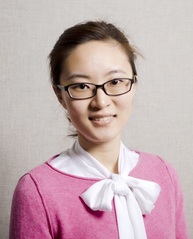
Yang Liu, PhD (now assistant professor at Northeastern University)
Yang Liu is currently a Postdoctoral Associate in the Department of Aeronautics and Astronautics at MIT, working with Professor Raul Radovitzky. She received her PhD degree in Computational Mechanics from Columbia University in 2015 under the supervision of Professors WaiChing Sun and Jacob Fish. She holds her MPhil (2014) and MS (2011) degrees in Civil Engineering and Engineering Mechanics also from Columbia and B.S.E. (2010) degree in Civil Engineering from Hohai University. Her research interests including high-performance computing, multiscale modeling of complex mechanical systems such as composites and granular materials. Her research group webpage can be found via the following link [URL]
Published Work:
Yang Liu is currently a Postdoctoral Associate in the Department of Aeronautics and Astronautics at MIT, working with Professor Raul Radovitzky. She received her PhD degree in Computational Mechanics from Columbia University in 2015 under the supervision of Professors WaiChing Sun and Jacob Fish. She holds her MPhil (2014) and MS (2011) degrees in Civil Engineering and Engineering Mechanics also from Columbia and B.S.E. (2010) degree in Civil Engineering from Hohai University. Her research interests including high-performance computing, multiscale modeling of complex mechanical systems such as composites and granular materials. Her research group webpage can be found via the following link [URL]
Published Work:
- Y. Liu, W.C. Sun, J. Fish, Determining material parameters for critical state plasticity models based on multilevel extended digital database, Journal of Applied Mechanics, 88(1), doi: 10.1115/1.4031619, 2015. [PDF][Bibtex]
- Y. Liu, W.C. Sun, Z-F. Yuan, J. Fish, A nonlocal multiscale discrete-continuum model for predicting mechanical behavior of granular materials, International Journal for Numerical Methods in Engineering, doi: 10.1002/nme.5139, 2015. [PDF] [Bibtex]
Former Associate Research Scientist
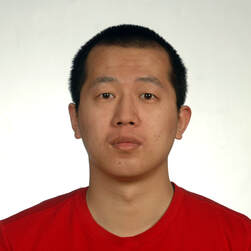
Ran Ma, PhD (now associate professor at Southeast University)
ORCID: 0000-0002-6016-693X
Dr. Ran Ma joined the group of Dr. WaiChing Sun at Columbia University as Postdoctoral Research Scientist in January 2019 and promoted to be an associate research scientist in 2021. He received his PhD degree (2018) in Civil and Environmental Engineering from University of Tennessee under the supervision of Dr. Timothy Truster. He holds Master's degree (2015) and Bachelor's degree (2013) in Materials Science and Engineering from Harbin Institute of Technology. Ran's research interests include crystal plasticity finite element method and FE-FFT multiscale modeling.
Published work:
ORCID: 0000-0002-6016-693X
Dr. Ran Ma joined the group of Dr. WaiChing Sun at Columbia University as Postdoctoral Research Scientist in January 2019 and promoted to be an associate research scientist in 2021. He received his PhD degree (2018) in Civil and Environmental Engineering from University of Tennessee under the supervision of Dr. Timothy Truster. He holds Master's degree (2015) and Bachelor's degree (2013) in Materials Science and Engineering from Harbin Institute of Technology. Ran's research interests include crystal plasticity finite element method and FE-FFT multiscale modeling.
Published work:
- R. Ma, W.C. Sun, FFT-based solver for higher-order and multi-phase-field fracture models applied to strongly anisotropic brittle materials and poly-crystals, Computer Methods in Applied Mechanics and Engineering, tentatively accepted, 2019.
- R. Ma, W.C. Sun, Computational thermomechanics for crystalline rock. Part II: chemo-damage-plasticity and healing in strongly anisotropic polycrystals, Computer Methods in Applied Mechanics and Engineering, accepted, 2020.
- N. Vlassis, R. Ma, W.C. Sun, Geometric deep learning for computational mechanics Part I: Anisotropic Hyperelasticity, Computer Methods in Applied Mechanics and Engineering, accepted, 2020.
- R. Ma, W.C. Sun, Phase field modeling of coupled crystal plasticity and deformation twinning in polycrystals with monolithic and splitting solvers, International Journal for Numerical Method in Engineering, doi:10.1002/nme.6577, 2020. [PDF]
- R. Ma, W.C. Sun, C. R. Picu, Atomistic-model informed pressure-sensitive crystal plasticity for crystalline HMX, International Journal of Solid and Structures, accepted, 2021.
- R. Ma, W.C. Sun, A finite micro-rotation material point method for micro-polar solid and fluid dynamics with three-dimensional evolving contacts and free surfaces, Computer Methods in Applied Mechanics and Engineering, accepted, 2021.
- C. Cai, N. Vlassis, L. Magee, R. Ma, Z. Xiong, B. Bahmani, T-F Wong, Y. Wang, W.C. Sun, Equivariant geometric learning for digital rock physics. Part I: Estimating formation factor and effective permeability tensors, International Journal for Multiscale Computation and Engineering, accepted, 2021.
- R. Ma, W.C. Sun, C.R. Picu, T. Sewell, Domain partitioning material point method for simulating shock in polycrystalline energetic materials, tentatively accepted provided that required changes are made, Computer Methods in Applied Mechanics and Engineering, accepted, 2022.

Yousef Heider, PhD (now group leader for multi-field mechanics at RWTH Aachen University)
ORCID: 0000-0003-2281-2563
Dr. Yousef Heider was our first associate Research Scientist who works from September 2018 to October 2019. He has been working since May 2014 as Lecturer at RWTH Aachen University in Germany. He received his PhD degree in Computational Porous Media Dynamics from University of Stuttgart, Germany in 2012 under the supervision of Professor Wolfgang Ehlers. He holds his Master’s degree (2007) in Computational Mechanics of Materials and Structures from the University of Stuttgart. He worked between July 2011 and April 2014 in the field of renewable energies (R&D) at the construction company Ed. Zueblin AG in Germany. His research interests include computational and experimental porous media mechanics, phase-field modeling, hydraulic fracturing and high-performance computing.
Published work:
ORCID: 0000-0003-2281-2563
Dr. Yousef Heider was our first associate Research Scientist who works from September 2018 to October 2019. He has been working since May 2014 as Lecturer at RWTH Aachen University in Germany. He received his PhD degree in Computational Porous Media Dynamics from University of Stuttgart, Germany in 2012 under the supervision of Professor Wolfgang Ehlers. He holds his Master’s degree (2007) in Computational Mechanics of Materials and Structures from the University of Stuttgart. He worked between July 2011 and April 2014 in the field of renewable energies (R&D) at the construction company Ed. Zueblin AG in Germany. His research interests include computational and experimental porous media mechanics, phase-field modeling, hydraulic fracturing and high-performance computing.
Published work:
- Y. Heider, W.C. Sun, Phase field modeling of capillary-induced fracture in unsaturated porous media: drying-induced vs. hydraulic-driven cracking, Computer Methods in Applied Mechanics and Engineering, accepted, 2019.
- Y. Heider, K. Wang, W.C. Sun, SO(3)-invariance of graph-based deep neural network for anisotropic elastoplastic materials, Computer Methods in Applied Mechanics and Engineering, doi:10.1016/j.cma.2020.112875, 2019.
- A. Fuchs, Y. Heider, K. Wang, W.C. Sun, M. Kaliske, DNN2: A hyper-parameter reinforcement learning game for self-design neural network elasto-plastic constitutive laws, Computer and Structures, accepted, 2021.
- Y. Heider, H.S. Suh, W.C. Sun, An offline multi-scale unsaturated poromechanics model enabled by self-designed/self-improved neural network, International Journal for Numerical and Analytical Methods in Geomechanics, doi:10.1002/nag.3196, 2021.

Chuanqi Liu, PhD (now associate professor at Chinese Academy of Sciences)
ORCID: 0000-0002-8629-7313
Dr. Chuanqi Liu worked as the Associate Research Scientist in our group from September 2018 to June 2020.
He joined the Institute of Mechanics at Chinese Academy of Sciences as associate professor in July 2020.Chuanqi obtained his Ph.D. in Hydraulic Engineering from Tsinghua University. Prior to joining Columbia, he has been a postdoc associate in the Department of Civil and Environmental Engineering in Princeton University, working with Prof. Jean H. Prevost since 2017. Chuanqi’s research interests lie in mesoscopic mechanism and modelling of granular materials. He also works in the assessment of the reactivation of various faults, such as branched and intersecting faults.
Published work (with the research group):
ORCID: 0000-0002-8629-7313
Dr. Chuanqi Liu worked as the Associate Research Scientist in our group from September 2018 to June 2020.
He joined the Institute of Mechanics at Chinese Academy of Sciences as associate professor in July 2020.Chuanqi obtained his Ph.D. in Hydraulic Engineering from Tsinghua University. Prior to joining Columbia, he has been a postdoc associate in the Department of Civil and Environmental Engineering in Princeton University, working with Prof. Jean H. Prevost since 2017. Chuanqi’s research interests lie in mesoscopic mechanism and modelling of granular materials. He also works in the assessment of the reactivation of various faults, such as branched and intersecting faults.
Published work (with the research group):
- C. Liu, W.C. Sun, Shift domain material point method for solids in the finite deformation range, special thematic issue for Meshfree and Particle Methods for Modeling Extreme Loadings, Computational Particle Mechanics, doi: 10.1007/s40571-019-00239-y, 2019.
- C. Liu, W.C. Sun, ILS-MPM: an unbiased implicit level-set-based material point method for frictional particulate contact mechanics of deformable particles, Computer Methods in Applied Mechanics and Engineering, accepted, 2020.
- T. Xue, W.C. Sun, S. Adriaenssens, Y. Wei, C. Liu, Shifted boundary method for level set reinitialization, under review.
Former Postdoctoral Scholars

Jinhyun Choo, PhD (now assistant professor at Korea Advanced Institute of Science and Technology)
ORCID: 0000-0002-5861-3796
Dr. Jinhyun Choo worked with us at Columbia as a Postdoctoral Research Scientist from September 2016 to September 2017.
He is Ph.D. graduate in Civil and Environmental Engineering at Stanford University, where he worked with Prof. Ronaldo I. Borja on the development of a multiscale modeling framework for coupled fluid flow and inelastic deformation in structured geomaterials. His research develops and applies mathematical, computational, and experimental methods to understand, model, and predict the mechanical behavior of subsurface systems in the built environment. At Columbia, he worked on computational modeling of cracking and/or multiphysical processes in geomaterials, with applications to a wide range of problems that relate to infrastructure, energy, and the environment. Prior to Stanford, he obtained his B.S. and M.S. degrees from Seoul National University, and worked at an engineering firm and a government funded research institute in Korea. He is the recipient of several prestigious awards including a Fulbright Scholarship and a Charles H. Leavell Fellowship for research on sustainable built environment. Dr. Choo has been an assistant professor at the University of Hong Kong since January 2018. For more information about his current work, please visit his research group website: https://www.choogroup.org/
Published work (with the research group):
ORCID: 0000-0002-5861-3796
Dr. Jinhyun Choo worked with us at Columbia as a Postdoctoral Research Scientist from September 2016 to September 2017.
He is Ph.D. graduate in Civil and Environmental Engineering at Stanford University, where he worked with Prof. Ronaldo I. Borja on the development of a multiscale modeling framework for coupled fluid flow and inelastic deformation in structured geomaterials. His research develops and applies mathematical, computational, and experimental methods to understand, model, and predict the mechanical behavior of subsurface systems in the built environment. At Columbia, he worked on computational modeling of cracking and/or multiphysical processes in geomaterials, with applications to a wide range of problems that relate to infrastructure, energy, and the environment. Prior to Stanford, he obtained his B.S. and M.S. degrees from Seoul National University, and worked at an engineering firm and a government funded research institute in Korea. He is the recipient of several prestigious awards including a Fulbright Scholarship and a Charles H. Leavell Fellowship for research on sustainable built environment. Dr. Choo has been an assistant professor at the University of Hong Kong since January 2018. For more information about his current work, please visit his research group website: https://www.choogroup.org/
Published work (with the research group):
- W.C. Sun, Z. Cai, J. Choo, Mixed Arlequin method for multiscale poromechanics problems, International Journal for Numerical Methods in Engineering, doi:10.1002/nme.5476, 2017. [PDF]
- J. Choo, W.C. Sun, Coupled phase-field and plasticity modeling of geological materials: From brittle fracture to ductile flow, Computer Methods in Applied Mechanics and Engineering, doi:10.1016/j.cma.2017.10.009, 2018.
- J. Choo, W.C. Sun, Cracking and damage from crystallization in pores: Coupled chemo-poro-mechanics and phase-field modeling, Computer Methods in Applied Mechanics and Engineering, doi:10.1016/j.cma.2018.01.044, 2018.

Qing Yin, PhD (now Senior Software Dev Engineer at Apple, Inc)
ORCID: 0000-0002-3738-1025
Dr. Qing Yin received PhD degree (2020) in Civil and Environmental Engineering from Stanford University, advised by Prof. Ronaldo I. Borja. He worked on the development of theoretical and computational methods to understand the long-term time-dependent behavior of geomaterials, with an emphasis on bridging the nonlinear mechanical responses of complex material systems at different spatial and temporal scales. Prior to Stanford, he received Bachelor’s degree (2014) in Civil Engineering from Tianjin University.
Published work:
Q. Yin, E. Ando, G. Viggiani, W.C. Sun, Freezing-induced stiffness and strength anisotropy in freezing clayey soil: theory, numerical modeling and experimental validation, doi:10.1002/nag.3380, 2022. [Feature Cover]
ORCID: 0000-0002-3738-1025
Dr. Qing Yin received PhD degree (2020) in Civil and Environmental Engineering from Stanford University, advised by Prof. Ronaldo I. Borja. He worked on the development of theoretical and computational methods to understand the long-term time-dependent behavior of geomaterials, with an emphasis on bridging the nonlinear mechanical responses of complex material systems at different spatial and temporal scales. Prior to Stanford, he received Bachelor’s degree (2014) in Civil Engineering from Tianjin University.
Published work:
Q. Yin, E. Ando, G. Viggiani, W.C. Sun, Freezing-induced stiffness and strength anisotropy in freezing clayey soil: theory, numerical modeling and experimental validation, doi:10.1002/nag.3380, 2022. [Feature Cover]

Camilo Alberto Duarte Cordon, PhD (now postdoc research scientist at Columbia University)
Dr. Camilo Alberto Duarte Cordon was a postdoctoral research scientist in this research group from January 2022 to February 2023. Camilo received his PhD degree (2021) in Mechanical Engineering from Purdue University and his Bachelor's degree (2015) in Mechanical Engineering from the National University of Colombia, Bogotá. At Purdue, his research focused on the computational modeling of high explosive crystals (HE) and polymer-bonded explosives (PBX) undergoing shock compression. His research interests include materials modeling, crystal plasticity, computational fracture, and materials under extreme conditions. In parallel to his research, Camilo supports initiatives to increase the visibility in STEM of Latinx students and other underrepresented communities.
Published work:
C. Durate, C.R. Picu, V. Tomar, W.C. Sun, Anisotropy of the fracture toughness in β-HMX crystals: a computational study, submitted.
Dr. Camilo Alberto Duarte Cordon was a postdoctoral research scientist in this research group from January 2022 to February 2023. Camilo received his PhD degree (2021) in Mechanical Engineering from Purdue University and his Bachelor's degree (2015) in Mechanical Engineering from the National University of Colombia, Bogotá. At Purdue, his research focused on the computational modeling of high explosive crystals (HE) and polymer-bonded explosives (PBX) undergoing shock compression. His research interests include materials modeling, crystal plasticity, computational fracture, and materials under extreme conditions. In parallel to his research, Camilo supports initiatives to increase the visibility in STEM of Latinx students and other underrepresented communities.
Published work:
C. Durate, C.R. Picu, V. Tomar, W.C. Sun, Anisotropy of the fracture toughness in β-HMX crystals: a computational study, submitted.

Guodong Zhang, Ph.D (now associate professor at Southeast University)
ORCID: 0000-0003-1999-3033
Dr. Guodong Zhang was a postdoctoral research scientist from January 2020 to June 2020. He received his Ph.D. in Civil Engineering from the University of Notre Dame under the supervision of Prof. Kapil Khandelwal, where his work mainly focuses on structural topology optimization with an emphasis on material and geometrically nonlinear effects. Guodong’s research interests are broadly in theoretical and computational mechanics. Mostly, his research focus is on developing efficient computational tools that can be used for capturing and understanding the mechanical and multi-physical performances of structures and materials, which in turn helps guide better designs.
ORCID: 0000-0003-1999-3033
Dr. Guodong Zhang was a postdoctoral research scientist from January 2020 to June 2020. He received his Ph.D. in Civil Engineering from the University of Notre Dame under the supervision of Prof. Kapil Khandelwal, where his work mainly focuses on structural topology optimization with an emphasis on material and geometrically nonlinear effects. Guodong’s research interests are broadly in theoretical and computational mechanics. Mostly, his research focus is on developing efficient computational tools that can be used for capturing and understanding the mechanical and multi-physical performances of structures and materials, which in turn helps guide better designs.
Master Alumni

Chulmin Kweon
I am currently enrolled in CEEM at Columbia University as a PhD student. My research interest is in finite element analysis on the various physical behaviors of geomaterials, including thermal-hydro mechanical effects, and the application of machine learning on material constitutive law. Prior to joining Professor Sun’s group, I received my Bachelor’s Degree and Master’s Degree at Yonsei University where I was researched elastodynamics using finite element method and virtual element method. Specifically, I studied the alleviation of mesh dependence in cohesive fracture simulation using adaptive element splitting with polygonal meshes.
Published work:
I am currently enrolled in CEEM at Columbia University as a PhD student. My research interest is in finite element analysis on the various physical behaviors of geomaterials, including thermal-hydro mechanical effects, and the application of machine learning on material constitutive law. Prior to joining Professor Sun’s group, I received my Bachelor’s Degree and Master’s Degree at Yonsei University where I was researched elastodynamics using finite element method and virtual element method. Specifically, I studied the alleviation of mesh dependence in cohesive fracture simulation using adaptive element splitting with polygonal meshes.
Published work:
- H.S. Suh, C. Kweon, B. Lester, S. Kramer, W.C. Sun, A publicly available e PyTorch-ABAQUS UMAT deep-learning framework for level-set plasticity, Mechanics of Materials, doi:10.1016/j.mechmat.2023.104682, 2023. [URL]

Zhijun Cai (last known position: CFD Engineer at Schuco USA)
Mr. Zhijun Cai graduated with a master of science degree at Columbia on 5/2016. He has conducted research at Arlequin method during his tenure with the research group from 9/2014 to 5/2016. This work results in one co-authored IJNME paper on Arlequin method. He holds a BS degree from Huazhong University and a MS degree from University of Southern California.
Published Work:
Mr. Zhijun Cai graduated with a master of science degree at Columbia on 5/2016. He has conducted research at Arlequin method during his tenure with the research group from 9/2014 to 5/2016. This work results in one co-authored IJNME paper on Arlequin method. He holds a BS degree from Huazhong University and a MS degree from University of Southern California.
Published Work:
- W.C. Sun, Z. Cai, J. Choo, Mixed Arlequin method for multiscale poromechanics problems, International Journal for Numerical Methods in Engineering, doi:10.1002/nme.5476, 2017. [PDF]

Francisco J. Contreras
I obtained my B.S. degree in Structural Engineering from the University of California, San Diego (UCSD) in 2015. I am currently pursuing my M.S. in Civil Engineering at Columbia University. I am currently involved with Society of Hispanic Professional Engineers (SHPE) and the Hispanic Scholarship Fund (HSF) chapter here in Columbia.
I obtained my B.S. degree in Structural Engineering from the University of California, San Diego (UCSD) in 2015. I am currently pursuing my M.S. in Civil Engineering at Columbia University. I am currently involved with Society of Hispanic Professional Engineers (SHPE) and the Hispanic Scholarship Fund (HSF) chapter here in Columbia.

Xian Zhang (last known position: PhD student at University of Illinois at Urbana–Champaign)
I graduated at Shanghai Jiao Tong University (SJTU) in 2015 with a B.S degree. While at SJTU, I studied mechanical engineering and was involved in several research projects regarding to materials and structural analysis. I am currently a master student (PhD track) in Columbia and am taking courses in finite element analysis and computational mechanics. My research interests include: implementation of phase field formulation in finite element analysis; structural material; mechanical behavior of materials and mathematical modeling process of crack behavior. I also want to learn about more numerical methods and other applied mathematics for more productive modeling processes.
I graduated at Shanghai Jiao Tong University (SJTU) in 2015 with a B.S degree. While at SJTU, I studied mechanical engineering and was involved in several research projects regarding to materials and structural analysis. I am currently a master student (PhD track) in Columbia and am taking courses in finite element analysis and computational mechanics. My research interests include: implementation of phase field formulation in finite element analysis; structural material; mechanical behavior of materials and mathematical modeling process of crack behavior. I also want to learn about more numerical methods and other applied mathematics for more productive modeling processes.
Undergraduate Alumni
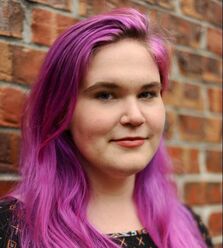
Emma Kathryn Plimpton Liebowitz
Emma recently received a B.S. from Columbia Engineering in Applied Mathematics and a B.A. from Sarah Lawrence College in Mathematics. She is planning to pursue a Ph.D. in Astrophysics. Emma Join Professor WaiChing Sun for the summer of 2021 as an Undergraduate Research Apprentice, her research will be funded by the Army Research Office.
Emma recently received a B.S. from Columbia Engineering in Applied Mathematics and a B.A. from Sarah Lawrence College in Mathematics. She is planning to pursue a Ph.D. in Astrophysics. Emma Join Professor WaiChing Sun for the summer of 2021 as an Undergraduate Research Apprentice, her research will be funded by the Army Research Office.

Mark Bereck
Mark Bereck is a junior mechanical engineering student at the University of Pittsburgh. He joined the group of Dr. WaiChing as an undergrad student participating in the Army Educational Outreach Program (AEOP). This is his first summer in the program and he is interested in machine learning.
Mark Bereck is a junior mechanical engineering student at the University of Pittsburgh. He joined the group of Dr. WaiChing as an undergrad student participating in the Army Educational Outreach Program (AEOP). This is his first summer in the program and he is interested in machine learning.

Duy Van Tran
I am a combined student at Columbia University majoring in civil engineering. I studied physics at College of the Holy Cross in Worcester, Ma. I joined Professor Steve Waiching Sun’s research group for the summer internship through the Army’s funding.
I am a combined student at Columbia University majoring in civil engineering. I studied physics at College of the Holy Cross in Worcester, Ma. I joined Professor Steve Waiching Sun’s research group for the summer internship through the Army’s funding.
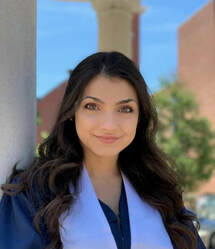
Elizabeth Rossi
Elizabeth Rossi has recently graduated from The George Washington University with a Bachelor of Science degree in Physics. At The George Washington University her research was focused on nuclear and atomic physics aspects of particles traveling through materials. Along with university research, Elizabeth also has experience in materials science research in the private sector. Elizabeth will join the group of Professor WaiChing Sun for the summer months of 2019 as an undergraduate research assistant through the 2019 Undergraduate Research Apprenticeship Program directed by the Army Research Office.
Elizabeth Rossi has recently graduated from The George Washington University with a Bachelor of Science degree in Physics. At The George Washington University her research was focused on nuclear and atomic physics aspects of particles traveling through materials. Along with university research, Elizabeth also has experience in materials science research in the private sector. Elizabeth will join the group of Professor WaiChing Sun for the summer months of 2019 as an undergraduate research assistant through the 2019 Undergraduate Research Apprenticeship Program directed by the Army Research Office.

Tracy Paltoo
Tracy Paltoo was apart of the combined plan program at Columbia University where she has obtained a B.S. in physics from Adelphi University and she obtained a B.S. in Civil Engineering with a dual concentration in structural engineering and construction management. At Adelphi University her research focused on the characterization of pulsed, controlled frequency chirped light at large detuning for atomic physics experiments. She is currently the combined plan representative on the Columbia University Engineering Student Council and works as a lab assistant at the Civil Engineering and Engineering Mechanics Robert A.W. Carleton Strength of Material Lab. Her current research involves an in-depth analysis of the water retention curve and relative permeability of porous media.
Published Work:
Tracy Paltoo was apart of the combined plan program at Columbia University where she has obtained a B.S. in physics from Adelphi University and she obtained a B.S. in Civil Engineering with a dual concentration in structural engineering and construction management. At Adelphi University her research focused on the characterization of pulsed, controlled frequency chirped light at large detuning for atomic physics experiments. She is currently the combined plan representative on the Columbia University Engineering Student Council and works as a lab assistant at the Civil Engineering and Engineering Mechanics Robert A.W. Carleton Strength of Material Lab. Her current research involves an in-depth analysis of the water retention curve and relative permeability of porous media.
Published Work:
- B. Kaufman, T. Paltoo, T. Grogan, T. Pena, J. P. St. John, and M. J. Wright. Pulsed, Controlled, Frequency-Chirped Laser Light at GHz Detunings for Atomic Physics Experiments. Appl. Phys. B 123, 58, 2017 (unaffiliated research)
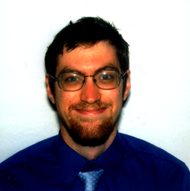
Efram J. Stone (last known position: master student at USC)
I graduated at Columbia University in 2015. I have also majored in mathematics at Yeshiva University by utilizing Columbia’s 3-2 program. I have previously researched with professor Sergey Buldyrev at Yeshiva University in the field of failure modeling and with Professor Yaakov Tischler at Bar Ilan university in the field of experimental design. I have done non-research work with MTA Capital Program Management and DeSimone Consulting Engineers. My research interest is the computational analysis of soil properties.
I graduated at Columbia University in 2015. I have also majored in mathematics at Yeshiva University by utilizing Columbia’s 3-2 program. I have previously researched with professor Sergey Buldyrev at Yeshiva University in the field of failure modeling and with Professor Yaakov Tischler at Bar Ilan university in the field of experimental design. I have done non-research work with MTA Capital Program Management and DeSimone Consulting Engineers. My research interest is the computational analysis of soil properties.
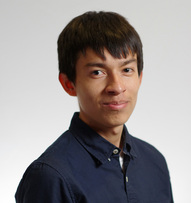
Imer Jasiel del Cid (last known position: engineer at Boeing)
I graduated at Columbia in civil engineering major with a concentration in structural engineering. Originally from El Salvador, I have spent the past few years in New York City. I have previously done research with professor George Deodatis in the field of probabilistic engineering mechanics at Columbia University. I have also interned with MTA Metro-North Railroad at Grand Central Terminal. I am interested in pursuing research in computational mechanics.
I graduated at Columbia in civil engineering major with a concentration in structural engineering. Originally from El Salvador, I have spent the past few years in New York City. I have previously done research with professor George Deodatis in the field of probabilistic engineering mechanics at Columbia University. I have also interned with MTA Metro-North Railroad at Grand Central Terminal. I am interested in pursuing research in computational mechanics.
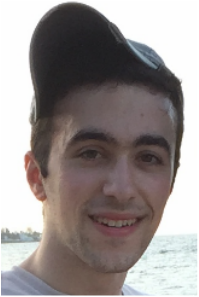
Steven Michael Lowinger
I am enrolled in a joint BA-BS program with Yeshiva University and Columbia. While at Yeshiva, I studied Physics with a minor in Mathematics. I am currently in my senior year at Columbia studying Civil Engineering with a concentration in Structural Engineering. While at Yeshiva, I conducted research in Network Theory, studying the mutual percolation and cascading failures of Random Regular as well as multi-dimensional lattice networks. I plan to use my knowledge of network theory to aid in my current research of rock fracture networks.
Published Work:
I am enrolled in a joint BA-BS program with Yeshiva University and Columbia. While at Yeshiva, I studied Physics with a minor in Mathematics. I am currently in my senior year at Columbia studying Civil Engineering with a concentration in Structural Engineering. While at Yeshiva, I conducted research in Network Theory, studying the mutual percolation and cascading failures of Random Regular as well as multi-dimensional lattice networks. I plan to use my knowledge of network theory to aid in my current research of rock fracture networks.
Published Work:
- G. Liu*, W.C. Sun, S.M. Lowinger**, Z. Zhang, M. Huang, J. Peng, Flow network and discrete element modeling of injection-induced crack propagation and coalescence in brittle rock, Acta Geotechnica, doi:10.1007/s11440-018-0682-1, 2018.

Ji Hoo Woo
I am a senior student at Columbia University with a Bachelor's Degree in Civil Engineering and concentration in Structural Engineering. I have done NYS RISE research on Storms Hazards and Vulnerabilities to Critical Facilities with Professor Deodatis. In 2016, I conducted independent research/design project, called Sustainable Bridge Design for Nuevo Jerusalen, Peru. I worked in Ysrael Seinuk PC, Consulting Engineers over the summer as a structural engineering intern.
I am a senior student at Columbia University with a Bachelor's Degree in Civil Engineering and concentration in Structural Engineering. I have done NYS RISE research on Storms Hazards and Vulnerabilities to Critical Facilities with Professor Deodatis. In 2016, I conducted independent research/design project, called Sustainable Bridge Design for Nuevo Jerusalen, Peru. I worked in Ysrael Seinuk PC, Consulting Engineers over the summer as a structural engineering intern.

Huiying Zhang
Huiying Zhang is currently a senior majoring in applied math and minoring in economics. She is part of Columbia’s chapter of the Society for Industrial and Applied Mathematics and the American Institute of Aeronautics and Astronautics on campus.
Huiying Zhang is currently a senior majoring in applied math and minoring in economics. She is part of Columbia’s chapter of the Society for Industrial and Applied Mathematics and the American Institute of Aeronautics and Astronautics on campus.
Former High School Summer Research Interns
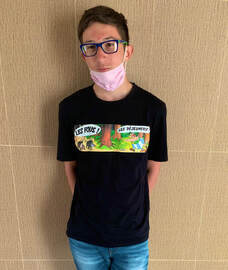
Daniel Lyalin
I am currently a senior at Stuyvesant High School in New York City. My experience in STEM is centered primarily around computational biology and computer science; previous to this internship, I worked on a project exploring the effects of ketosis on mealworm larvae development as part of a research biology course. In addition, I work on web development for Stuyvesant’s honors society, ARISTA, and for the Ethics Bowl team. Outside of STEM, I’m interested in philosophy, geopolitics, and linguistics. My current internship at Columbia studying the applications of convolutional neural networks in traction separation problems is funded by the Army Research Office.
I am currently a senior at Stuyvesant High School in New York City. My experience in STEM is centered primarily around computational biology and computer science; previous to this internship, I worked on a project exploring the effects of ketosis on mealworm larvae development as part of a research biology course. In addition, I work on web development for Stuyvesant’s honors society, ARISTA, and for the Ethics Bowl team. Outside of STEM, I’m interested in philosophy, geopolitics, and linguistics. My current internship at Columbia studying the applications of convolutional neural networks in traction separation problems is funded by the Army Research Office.

Brooke Lauren
I am currently a high school junior attending Mother Seton Regional High School in NJ. My experience in science includes being a competitor in the science and math leagues facilitated by my school. I hope to continue this by pursuing a degree in engineering when I start college in two years. My current internship at Columbia is supported by the Army Educational Outreach Program.

Anish Avasthi
I am currently a senior in Woodlands High School in Hartsdale, New York. Prior to this internship, my experience in mathematics, science, and engineering consists of: a STEAM internship led by my school district’s STEAM director in which I was tasked to work on architectural and research projects, the ACE Mentorship Program led by Greater New York Inc. in which my team was required to plan and model an entire building, participation in various math, science, and robotics competitions, and assisting my science instructors in delicate laboratory procedures. My current research internship in Columbia University is supported by the Army Educational Outreach Program.
I am currently a senior in Woodlands High School in Hartsdale, New York. Prior to this internship, my experience in mathematics, science, and engineering consists of: a STEAM internship led by my school district’s STEAM director in which I was tasked to work on architectural and research projects, the ACE Mentorship Program led by Greater New York Inc. in which my team was required to plan and model an entire building, participation in various math, science, and robotics competitions, and assisting my science instructors in delicate laboratory procedures. My current research internship in Columbia University is supported by the Army Educational Outreach Program.

Sophia Wang
Sophia Wang is currently a high school student at Amity Regional High School in Woodbridge, CT. Her experience in the STEM fields includes competing in science research competitions. Her primary research experience stems from her engineering project. She has been working and is continuing to work on engineering a sinkhole detection system for at risk areas. She is interested in the interdisciplinary nature of engineering and hopes to pursue STEM in the future. Outside of STEM, Sophia is interested in public policy, diplomacy, and reform. Sophia’s current internship with the group of Professor Waiching Sun is sponsored by the Army Research Office.
Sophia Wang is currently a high school student at Amity Regional High School in Woodbridge, CT. Her experience in the STEM fields includes competing in science research competitions. Her primary research experience stems from her engineering project. She has been working and is continuing to work on engineering a sinkhole detection system for at risk areas. She is interested in the interdisciplinary nature of engineering and hopes to pursue STEM in the future. Outside of STEM, Sophia is interested in public policy, diplomacy, and reform. Sophia’s current internship with the group of Professor Waiching Sun is sponsored by the Army Research Office.
Visiting Scholars
Alessandro Milleri, University of Perugia, Italy, 9/2018-3/2019
Wei Cao, Tsinghua University, 1/2017-6/2017
Yingfeng Sun, China University of Mining and Technology-Beijing, 1/2017-12/2017
Xi Qin, Tsinghua University, 9/2016-6/2017
Xinran Zhong, Tongji University, 8/2016-6/2018
Luca Tassini, University of Perugia, Italy, 1/2016-5/2016
Zhilin Liu, Nanjing University of Science and Technology, 9/2015-6/2016
Ning Liu, BeiHang University, China, 9/2015-9/2016
Zheyuan Zheng, Southeast University, China, 9/2014-9/2015
Guang Liu, Wuhan University, China, 9/2014-9/2015
Federica Ronchi, University of Perugia, Italy, 2/2015-5/2015
Collaborators (in chronological order, only coauthors of journal articles or co-PIs of funded projects are listed)
Stephen Baek, University of Virginia, 9/2019-current
HS Udaykumar, University of Iowa, 9/2019-current
Tommy Sewell, University of Missouri, 9/2019-current
Yusu Wang, Ohio State University, 9/2019-current
Cataline Picu, Rensselaer Polytechnic Institute, 9/2019-current
Yanxun Xu, Johns Hopkins University, 9/2019-9/2020
Joshua White, Lawrence Livermore National Laboratory, 6/2019-9/2019
Qiang Du, Columbia University, 3/2017-01/2021
Hongkyu Yoon, Sandia National Laboratories, 1/2017-9/2020
Matthew Ingraham, Sandia National Laboratories, 6/2017-9/2017
Claudio Tamagnini, Università degli Studi di Perugia, 2014
Jacob Fish, Columbia University, 1/2014-6/2017
Huiming Yin, Columbia University, 3/2016-6/2018
Ole Ivar Ulven, University of Oslo, 9/2015-12/2017
Peter Kelemen, Columbia University, 9/2014-12/2017
Marc Spiegelman, Columbia University, 9/2014-12/2017
Simon Salager, Université de Joseph Fourier, 2012-2017
Teng-fong Wong, Stony Brook University (now at Chinese University of Hong Kong), 2012-2022
Matthew Kuhn, University of Portland, 6/2012-1/2016
James W. Foulk, Sandia National Laboratories, 7/2011-12/2013
Alejandro Mota, Sandia National Laboratories, 7/2011-12/2013
Jakob T. Ostien, Sandia National Laboratories, 7/2011-12/2013
John W. Rudnicki, Northwestern University, 6/2008-12/2013
Jose. E. Andrade, Northwestern University (now at Caltech), 6/2008-6/2011
Ronaldo I. Borja, Stanford University, 9/2005-6/2008
“Nothing great was ever achieved without enthusiasm.”― Ralph Waldo Emerson
Alessandro Milleri, University of Perugia, Italy, 9/2018-3/2019
Wei Cao, Tsinghua University, 1/2017-6/2017
Yingfeng Sun, China University of Mining and Technology-Beijing, 1/2017-12/2017
Xi Qin, Tsinghua University, 9/2016-6/2017
Xinran Zhong, Tongji University, 8/2016-6/2018
Luca Tassini, University of Perugia, Italy, 1/2016-5/2016
Zhilin Liu, Nanjing University of Science and Technology, 9/2015-6/2016
Ning Liu, BeiHang University, China, 9/2015-9/2016
Zheyuan Zheng, Southeast University, China, 9/2014-9/2015
Guang Liu, Wuhan University, China, 9/2014-9/2015
Federica Ronchi, University of Perugia, Italy, 2/2015-5/2015
Collaborators (in chronological order, only coauthors of journal articles or co-PIs of funded projects are listed)
Stephen Baek, University of Virginia, 9/2019-current
HS Udaykumar, University of Iowa, 9/2019-current
Tommy Sewell, University of Missouri, 9/2019-current
Yusu Wang, Ohio State University, 9/2019-current
Cataline Picu, Rensselaer Polytechnic Institute, 9/2019-current
Yanxun Xu, Johns Hopkins University, 9/2019-9/2020
Joshua White, Lawrence Livermore National Laboratory, 6/2019-9/2019
Qiang Du, Columbia University, 3/2017-01/2021
Hongkyu Yoon, Sandia National Laboratories, 1/2017-9/2020
Matthew Ingraham, Sandia National Laboratories, 6/2017-9/2017
Claudio Tamagnini, Università degli Studi di Perugia, 2014
Jacob Fish, Columbia University, 1/2014-6/2017
Huiming Yin, Columbia University, 3/2016-6/2018
Ole Ivar Ulven, University of Oslo, 9/2015-12/2017
Peter Kelemen, Columbia University, 9/2014-12/2017
Marc Spiegelman, Columbia University, 9/2014-12/2017
Simon Salager, Université de Joseph Fourier, 2012-2017
Teng-fong Wong, Stony Brook University (now at Chinese University of Hong Kong), 2012-2022
Matthew Kuhn, University of Portland, 6/2012-1/2016
James W. Foulk, Sandia National Laboratories, 7/2011-12/2013
Alejandro Mota, Sandia National Laboratories, 7/2011-12/2013
Jakob T. Ostien, Sandia National Laboratories, 7/2011-12/2013
John W. Rudnicki, Northwestern University, 6/2008-12/2013
Jose. E. Andrade, Northwestern University (now at Caltech), 6/2008-6/2011
Ronaldo I. Borja, Stanford University, 9/2005-6/2008
“Nothing great was ever achieved without enthusiasm.”― Ralph Waldo Emerson
